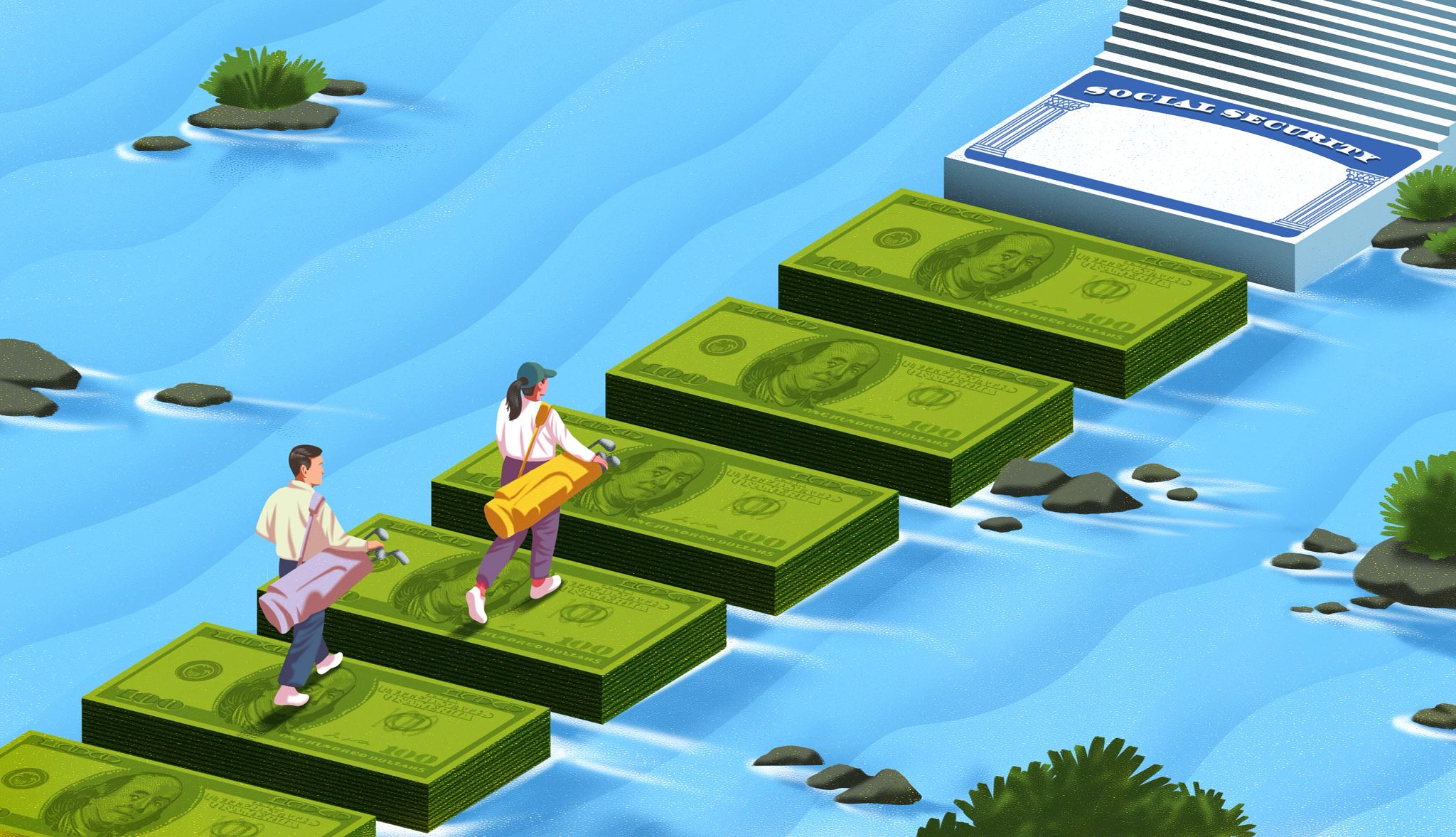AARP Hearing Center


David Johnston’s clients worry. They worry about drawing down their hard-won retirement savings and having to pay taxes on that money when they do. They worry about keeping cash on hand for a rainy day. They worry about having something left to leave to their loved ones.
“I totally get it,” says Johnston, a certified financial planner and partner at New Jersey-based OnePoint BFG Wealth Partners. “They’ve spent all their lives saving. They like seeing the statements. It gives them a sense of comfort.”
But Johnston, along with a growing number of financial planners and policy analysts, is urging people nearing retirement to think about those savings — 401(k)s, IRAs, investments — in a new light, one that involves leaning on those funds in their first years after leaving work.
The reason is simple: The longer you can afford to delay filing for Social Security, up to age 70, the bigger your monthly retirement benefit will be.
“You have to show them the math,” Johnston says. “If you have resources elsewhere that can tide you over, it’s going to be in your best interest to wait.”
That math shows that holding off until age 70 to file for retirement benefits will result in a 77 percent larger monthly payment than if you claim at 62, the earliest age of eligibility. Locking in higher benefits can be especially important as lifespans get longer, because, unlike retirement savings, these benefits are guaranteed to last for life and are adjusted annually to keep up with inflation.
Join Our Fight to Protect Social Security
You’ve worked hard and paid into Social Security with every paycheck. Here’s what you can do to help keep Social Security strong:
- Add your name and pledge to protect Social Security.
- Find out how AARP is fighting to keep Social Security strong.
- Get expert advice on Social Security benefits and answers to common questions.
- AARP is your fierce defender on the issues that matter to people 50-plus. Become a member or renew your membership today.
The average life expectancy for a U.S. adult who reaches age 65 is approximately 83 for men and 86 for women. If you live that long, or longer, your assets will go further if you use them to delay claiming Social Security, because the bigger Social Security payments will reduce your need to tap savings, according to a July 2025 study from the Bipartisan Policy Center (BPC), a Washington, D.C.–based think tank.
‘It’s pretty basic’
The idea behind what financial professionals call a Social Security “bridge strategy” is to leverage retirement savings to carry you to that later Social Security claim.
“It’s pretty basic,” says JoePat Roop, founder and president of Belmont Capital Advisors in Belmont, North Carolina. “We can take dollars from taxable accounts to help [people] pay their bills during that phase.”
But while the bridge strategy is gaining attention in planning circles, it’s a tough sell for many older adults, says Emerson Sprick, director of retirement and labor policy at the BPC and the author of the July study.
“There’s a lot of psychology that goes into people’s unwillingness to start chipping away at this nest egg they’ve spent their lifetimes accumulating,” Sprick says. “The system is really good at helping people accumulate assets and really bad at helping people stop saving who need to start spending.”


































































More From AARP
How to Make Your Money Last if You Live to 100
Durable income streams key in a long-lasting retirement
When Should You Claim Social Security Early?
Waiting boosts monthly payment but isn't always feasible
Estimate Your Social Security Benefits
When to claim and how to maximize your payments